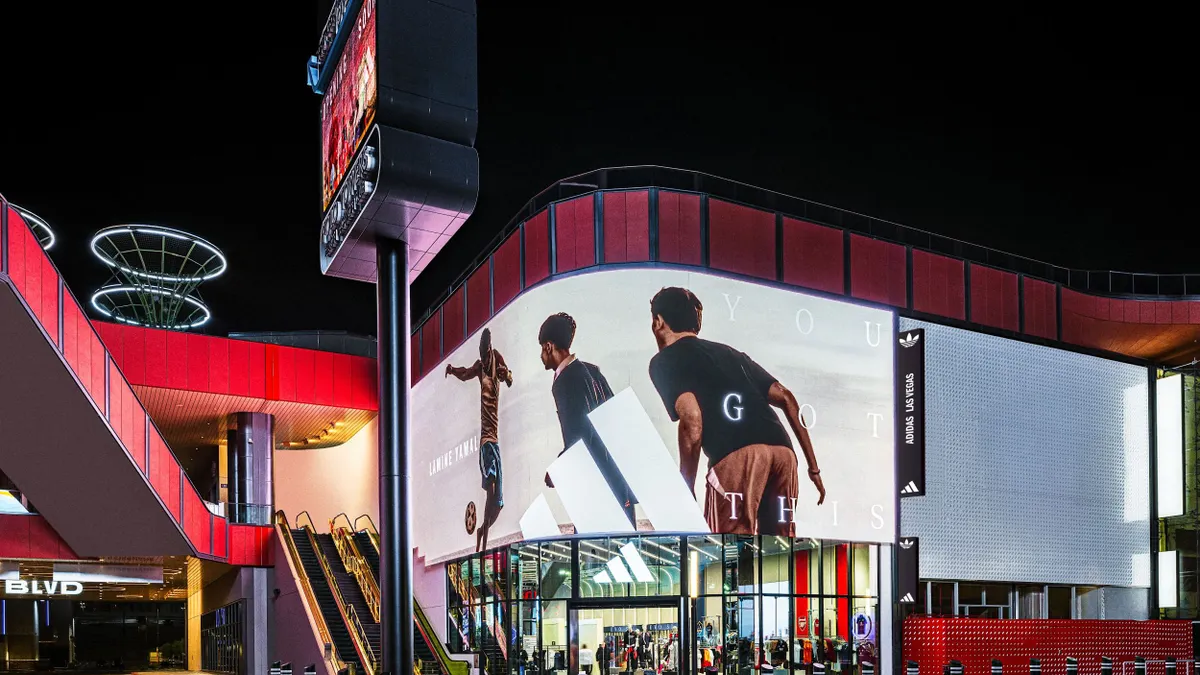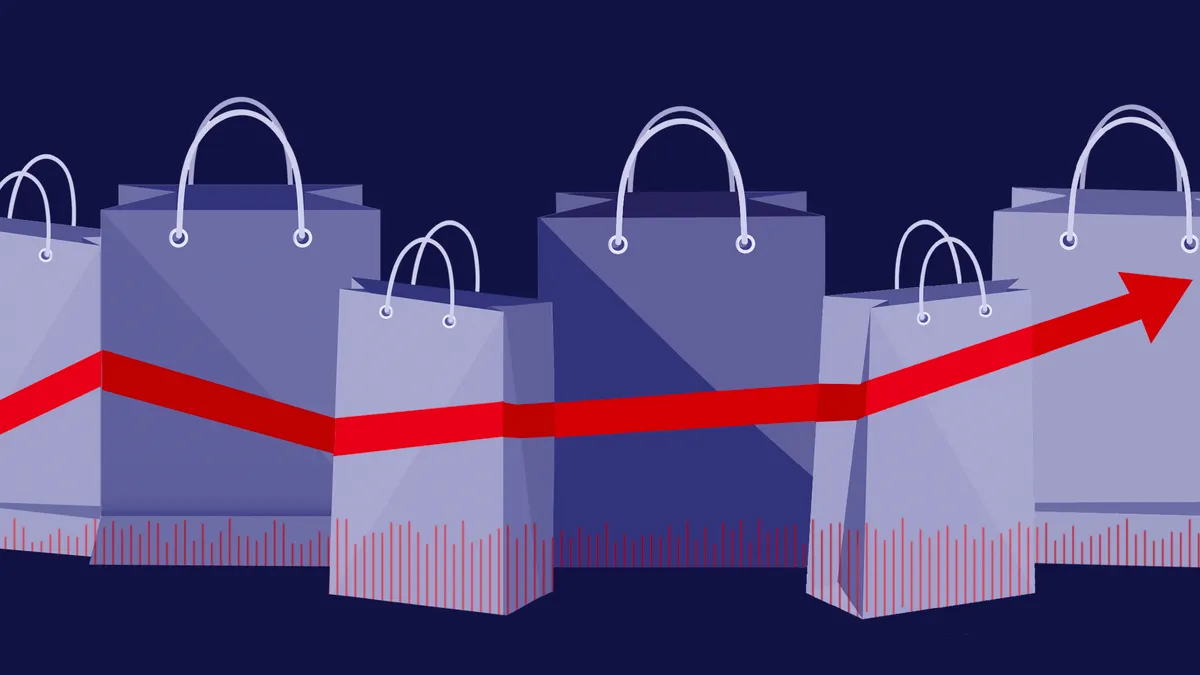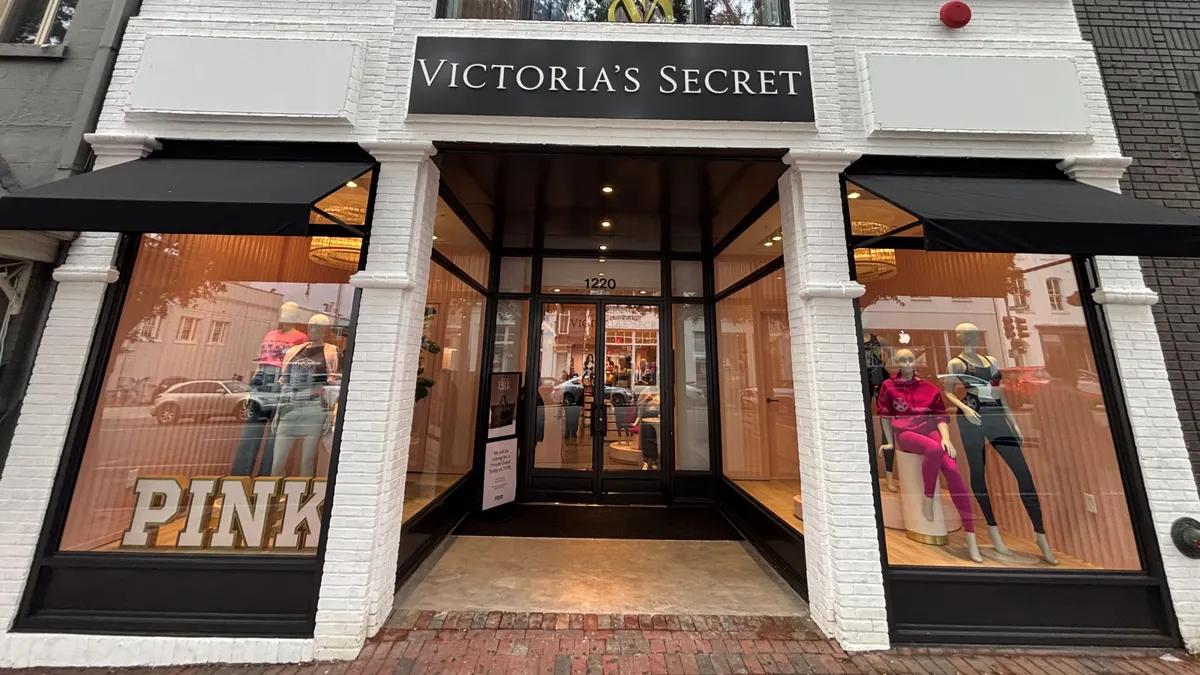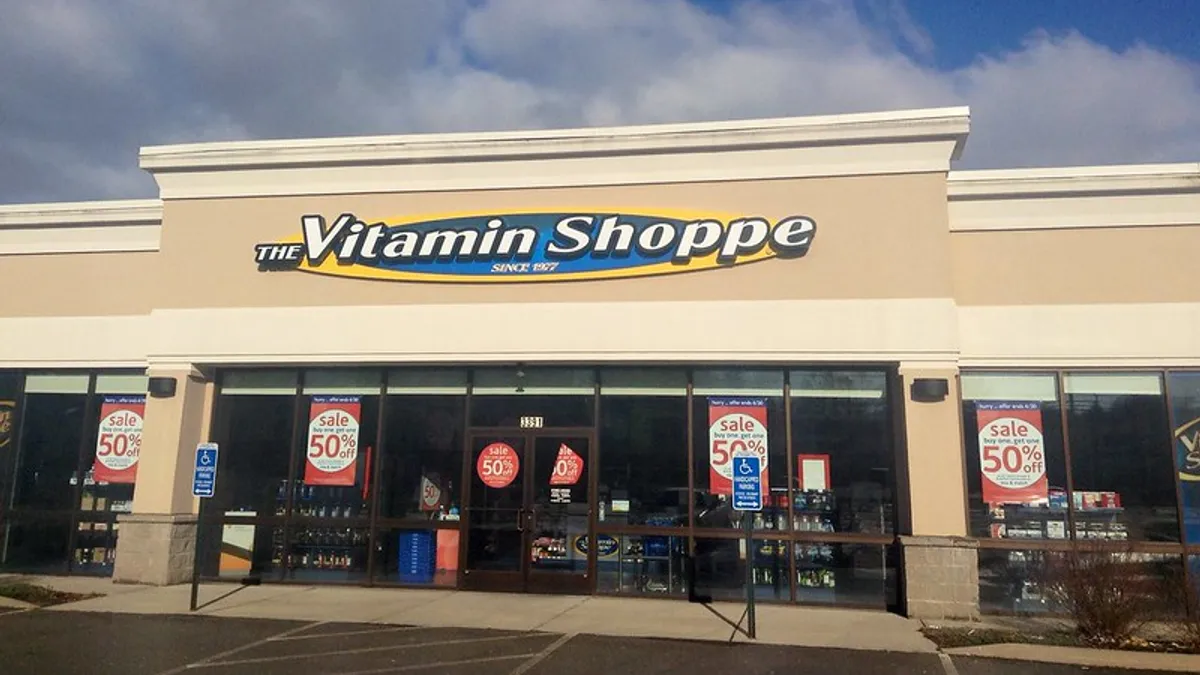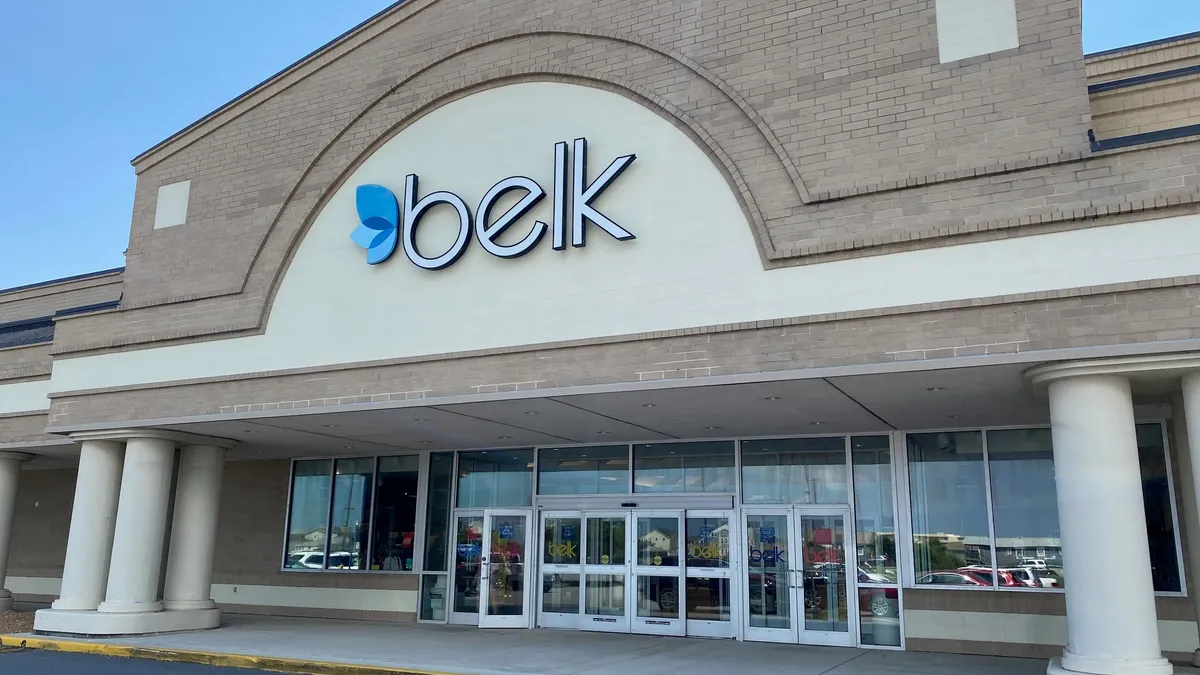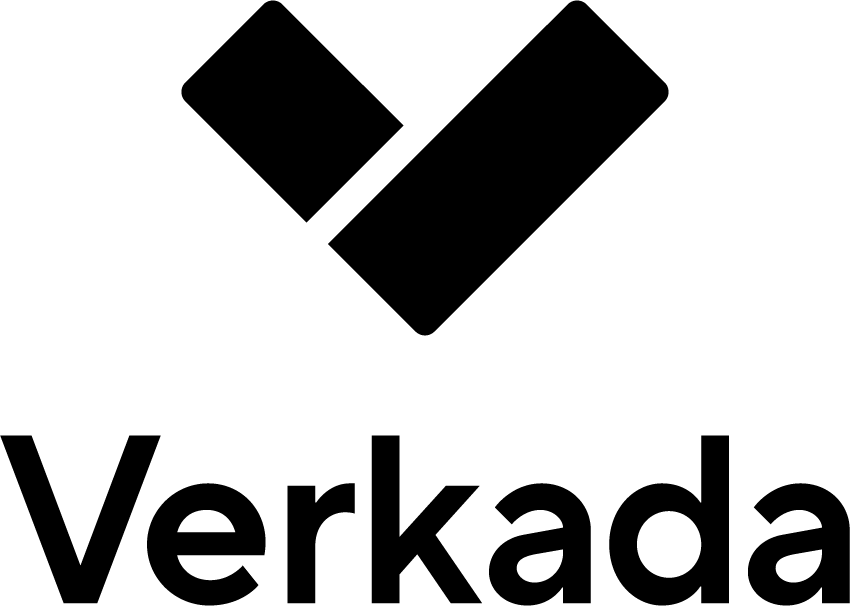Kicking someone when they’re down is generally frowned upon, but what if it’s your biggest rival and the undisputed leader in the activewear space?
Since last year, Nike has been in the midst of a rare challenging period, brought on by a distribution strategy that swung too far toward DTC and an oversaturation of the sneaker market with classic styles. In its most recent fiscal year, Nike revenue declined 10%, dipping below $50 billion for the first time since 2022.
Adidas, meanwhile, has been on something of a heater. The activewear giant saw sales surge by double-digits in its most recent fiscal year and officially put the Yeezy fiasco to bed earlier this year. Even so, the retailer in 2024 made little more than half of Nike’s latest annual revenue.
Much of that blame can be laid at the feet of the North American market, where Adidas makes three times less than Nike. That region accounts for $13 billion of the nearly $19 billion total revenue difference between the rivals, at current exchange rates.
But Adidas has a plan — one that relies on being “more American.” The retailer is empowering its local teams to make strategy decisions, investing deeply in signing American athletes and pursuing a stronger presence in college athletics.
“It's the one thing that has held Adidas back here for a long, long time,” Matt Powell, a senior adviser with BCE Consulting who has worked with Adidas for 50 years, said. “If they just made product that was right for the U.S., they could be a whole lot bigger. And I think we're at the beginnings of that.”
The time seems ripe to make a play, but with Nike rebounding in its most recent quarter, is it already too late?
Tokyo, Taekwondo and the art of going low
Adidas is approaching its growth strategy with a healthy mix of optimism and realism. CEO Bjørn Gulden in July said the brand aims to be the market leader in all regions “except for North America,” but still intends to double its business in the area.
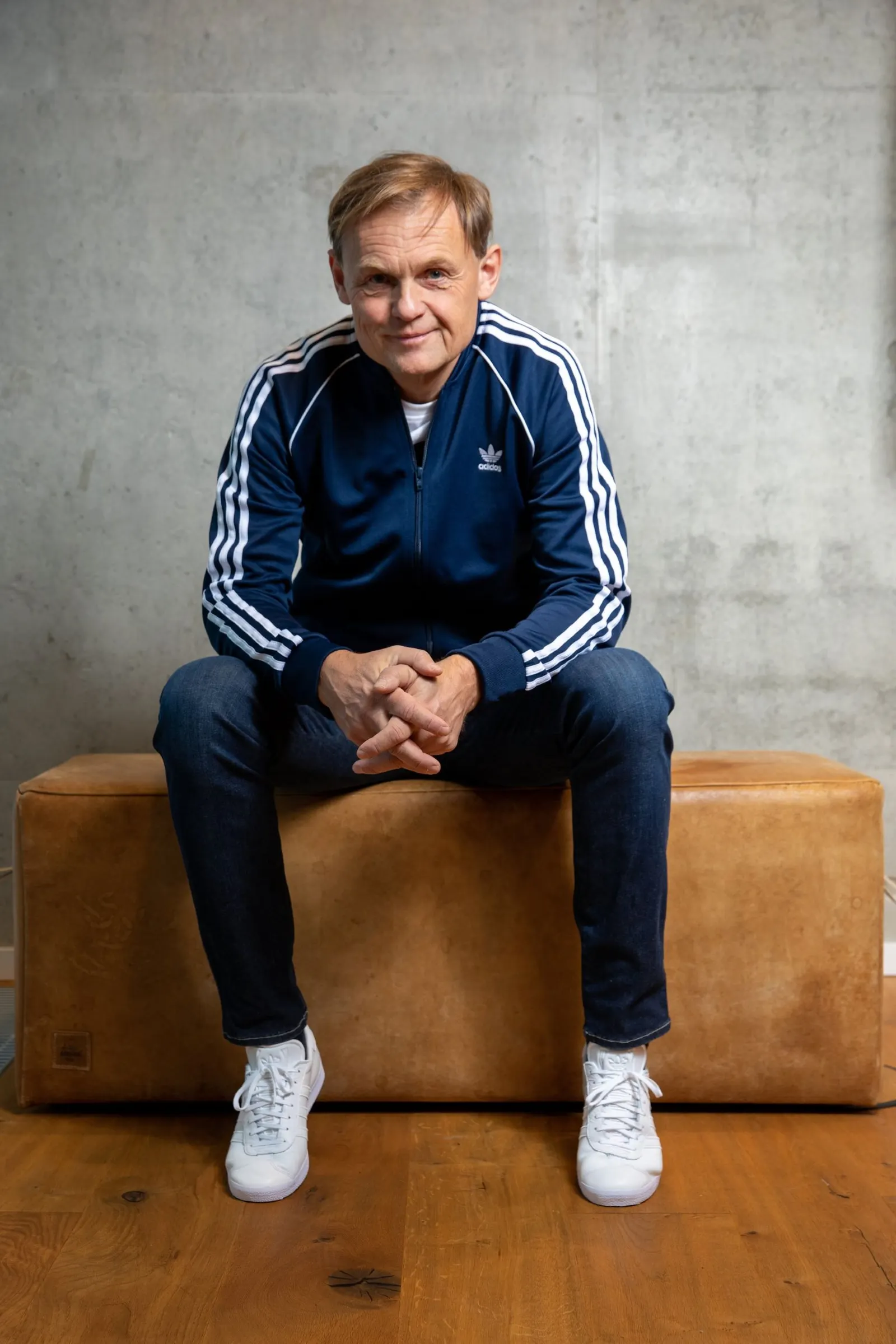
“We will not be number one in all markets, but our local leaders should have that ambition and identify what is necessary in terms of products, marketing, organization and resources to achieve this,” Gulden said in a statement in Q2 earnings.
When asked for an interview on Adidas’ opportunity in the U.S. and its local strategy, a company spokesperson directed Retail Dive to comments Gulden made on the brand’s Q2 earnings call. In those remarks, Gulden attributed the brand’s positive progress to the realization “that we need to be a global brand with a local mindset.”
“The markets are closest to the consumer, and they need to make sure that they run the business. And we, from global, then need to make sure that we have the best people hired and maintained in the markets, that we provide the frame, the systems, the innovation and the concepts,” Gulden said. “But we have to make sure that we make decisions as close as we can to the consumer, because the consumer in different parts of the world is behaving different, are being influenced by different things, and there are much bigger differences in the products than people think."
Taking a more local approach to the U.S. is the right call, according to Powell, who also said Adidas North America President John Miller is the right person to lead that charge. Miller took on that position in 2024 and has more than a decade of experience at Nike and several years at Puma as well.
Fully erasing the deficit in North America may feel out of reach for now, but momentum is in Adidas’ favor. TD Cowen analysts in June noted that Nike’s market cap was just 2.2 times that of Adidas, almost the lowest in two decades. Over the past 10 years, Nike has averaged a 4 times multiple over its German rival, according to the analyst firm.
“Nike is unlikely to lose its #1 positioning in the market, but it is at risk of losing share to relevant competitors,” the analysts wrote, noting that Adidas and Nike tend to run countercyclical to each other.
In the same note, TD Cowen said Nike was losing share to the likes of On, Hoka and Brooks, while Adidas was riding the high of the low-profile trend. Adidas footwear styles like the Tokyo and the Taekwondo have propelled the brand to the front of consumers’ minds, and there’s still runway with those franchises. Powell said neither of those shoes have reached true commercial levels yet.
“They're not yet exploiting the buzz around those shoes — and I think when they get up to speed there, I think we'll see them come back to some nice growth,” Powell said.
That alone won’t be enough to maintain Adidas’ position in the market. The retailer will need to keep innovating and searching for whatever hits the cultural zeitgeist next — and be better-prepared to capitalize on it next time, Powell noted.
Adidas has other trends working in its favor right now as well, including performance footwear as fashion, retro styles and a new movement of women-led footwear trends that is driving the popularity of styles like Adidas’ Samba and Mexico.
Now is a good time to pull ahead. Nike missed the boat on the low-profile trend, per Powell, and continues to grapple with the need to rightsize the Air Force 1, Air Jordan and Dunk shoe franchises.
These two retailers have been through a similar dance before. Needham analyst Tom Nikic told Retail Dive in June that Nike was similarly overindexed on Air Jordans eight or nine years ago after opening up the supply to “fight back against Adidas.”
Nike got out of that pickle by rightsizing the Jordan supply and rolling out collaborations with the likes of Off-White. A similar playbook will be needed now for Nike to regain some of its clout with shoppers, according to Nikic.
"Nike [is] getting some of its swagger back."

Matt Powell
Senior Adviser with BCE Consulting
“Bjørn has been doing very well with that brand and I think it increases the degree of difficulty for Nike in terms of executing on the turnaround when you have Adidas doing well, New Balance doing well, Hoka and On doing well,” Nikic said in June.
Another potential boon to Adidas is the bridges Nike burned in wholesale, though the brand has since been working hard to mend its relationships with retail partners. While Foot Locker once ran a 75% Nike operation, that is unlikely to ever recur after the heavy losses Foot Locker suffered when Nike pulled back. Going forward, Foot Locker is likely to be more of a true house of brands, Nikic said, with a larger Adidas presence and more styles from smaller brands as well.
“They just prioritized their own stores and they didn't prioritize, say, Foot Locker, who reached out to other brands to fill the gap,” Barbara Kahn, a marketing professor at The Wharton School at the University of Pennsylvania, said. “That ended up hurting Nike a lot, because a lot of people were making decisions in these multibrand stores and Nikes just weren't on the shelves.”
You’ve got this, right? Or is winning not for everyone?
As the competition between Nike and Adidas sharpens in North America, there’s an interesting split happening in the way the two activewear giants market themselves to shoppers. Both retailers want to win, but the way they’re messaging that is vastly different.
Last year, as part of a promise to reclaim “bolder” brand marketing, Nike released “Winning Isn’t for Everyone,” an ad that takes a ruthless approach to success. One visual leading up to the Summer Olympics showed NBA star Victor Wembanyama alongside the words “My Dream is to End Theirs.”
Several months later, Adidas rolled out “You Got This,” an ad that centers around the support and encouragement athletes receive from friends, family and teammates. The ads could hardly be more different in terms of tone — but that may not be a bad thing.
“I think their campaign makes perfect sense for them and I think it is differentiated from Nike, and that's good,” Kahn said of Adidas’ ad. “I don't think they should do what Nike is doing, and I don't think Nike should do what Adidas is doing. They just have different heritages and they're both going to play well if they can capitalize and build on their heritage.”
Adidas’ marketing mirrors the tone of some other European brands like Puma and On, which have taken more light-hearted approaches to athletics in recent ads, including a starring role for Sesame Street’s Elmo. The strategy is representative of a sense of belonging that’s popular with younger consumers these days, Powell said, but there is room for both approaches right now.
Some of the unapologetic messaging in Nike’s ads “is really Nike getting some of its swagger back that I think they lost during the Donahoe era,” Powell said regarding the former CEO. “To some extent, I think that marketing is aimed internally and to the industry as much as it is to the consumer.”
Historically, Nike has also done its best when it’s had bold campaigns, according to Nikic, and it’s easier to revamp a marketing strategy than it is to bring new product to market. If Nike can prime its customer base with a series of attention-grabbing ads, that could go a long way toward getting their buy-in when innovative products do drop.
More recent ad campaigns, like “Why Do It,” also take a step back from the swagger, which may be an acknowledgement of the need for both types of messaging. For Nike, it’s just important to return to being top-of-mind, according to Kahn.
Adidas has dipped into other marketing approaches as well. A recent Originals campaign touts the timelessness of the Superstar sneaker in an artsy campaign, though Powell says that silhouette is off-trend and shouldn’t be promoted as heavily as it is currently.
The skill with which Adidas and Nike are able to curry favor with North American consumers could be critical to how their rivalry plays out, especially in the next year or so as Nike potentially gears up for a comeback. The activewear giant’s revenue may have edged up 1% in its most recent quarter, but the brand is far from out of the woods yet — and that means there are a few potentially crucial quarters ahead for Adidas.
“I think Adidas can still do well here, whether or not Nike is healed,” Powell said. “It probably would have been easier when Nike was really in tough shape. But there's still runroom.”



